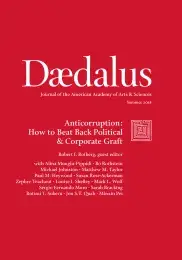Combating Corruption in Asian Countries: Learning from Success & Failure
With widespread corruption in many Asian countries, Singapore and Hong Kong SAR have proved exceptions: their governments’ strong political will and reliance on single “Type A” anticorruption agencies (ACAs) have effectively and impartially enforced anticorruption laws. By contrast, the governments in China, India, and the Philippines have failed to minimize corruption due to weak political will and reliance on multiple ineffective and poorly resourced “Type B” ACAs. This essay draws on the experiences of these five countries to identify four lessons for policy-makers to enhance the effectiveness of their ACAs.
Corruption is a serious problem in many Asian countries. On Transparency International’s 2016 Corruption Perceptions Index (CPI), countries like China, India, and the Philippines have earned low scores as they remain plagued by pervasive corruption due not only to their governments’ reliance on ineffective anticorruption agencies (ACAs), but also to the lack of political will to fund and enforce anticorruption efforts. Singapore and Hong Kong SAR, however, are exceptions, having earned high CPI scores of 84 and 77, respectively.1 In these two countries, the public reports a lower level of perceived corruption and a greater trust in politicians because of their success in minimizing corruption (see Table 1). Why have Singapore and Hong Kong succeeded in combating corruption while India, China, and the Philippines have failed to do so? What lessons can policy-makers learn from these cases? This essay addresses these questions and identifies four lessons for policy-makers to enhance the effectiveness of ACAs. . . .
